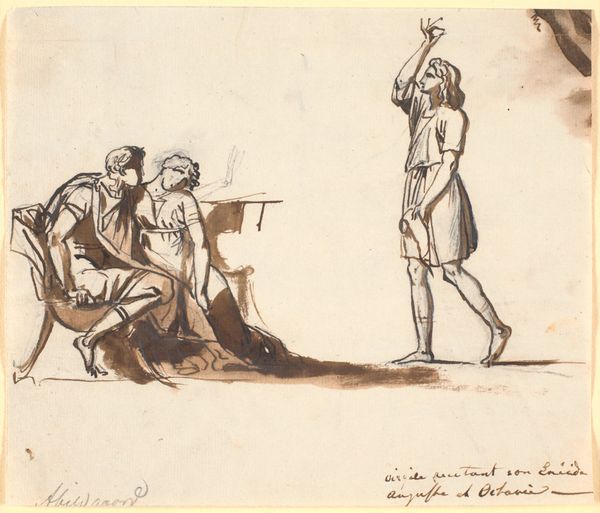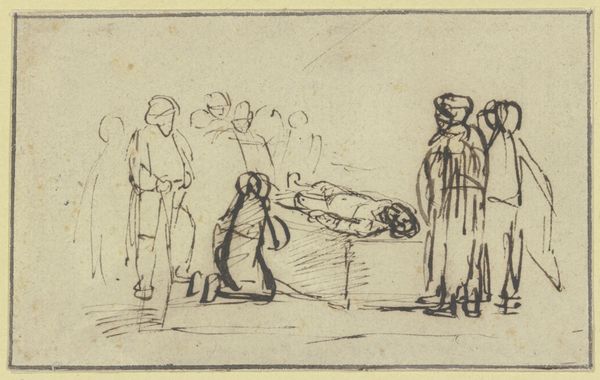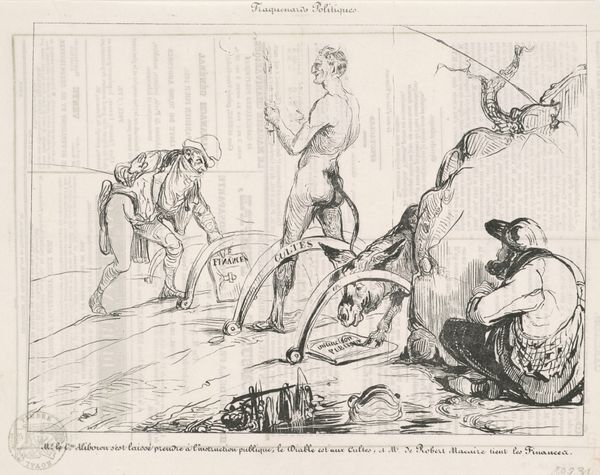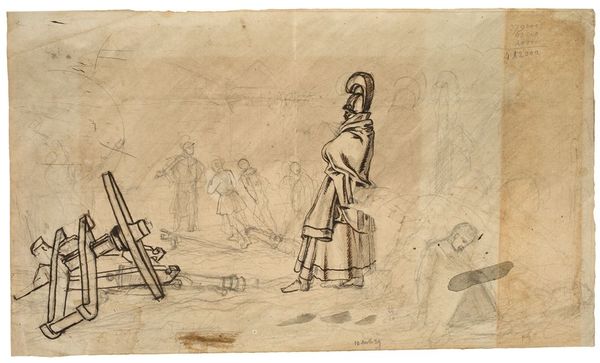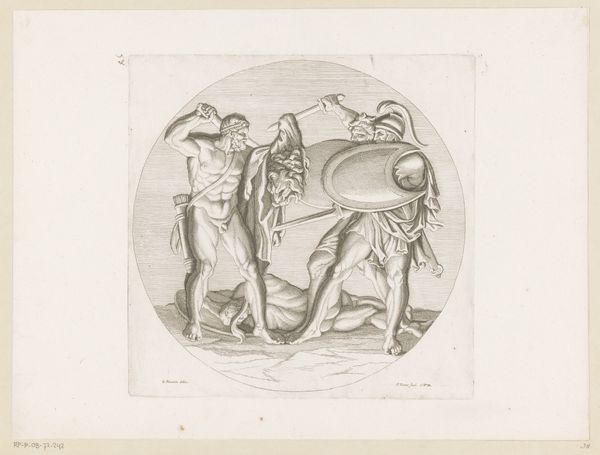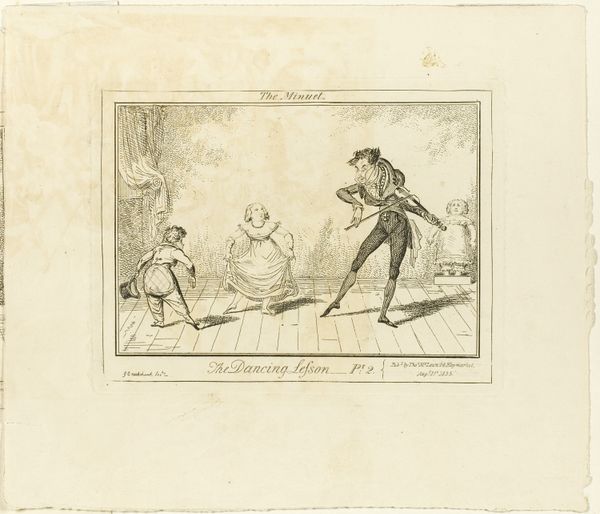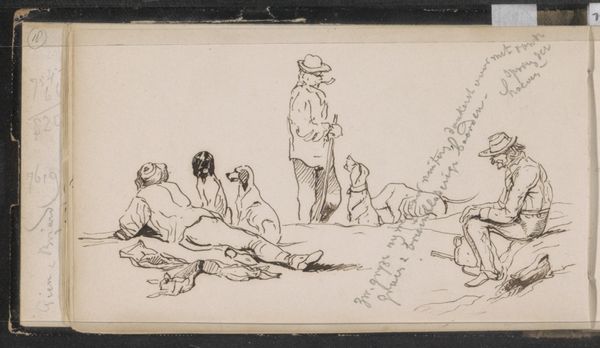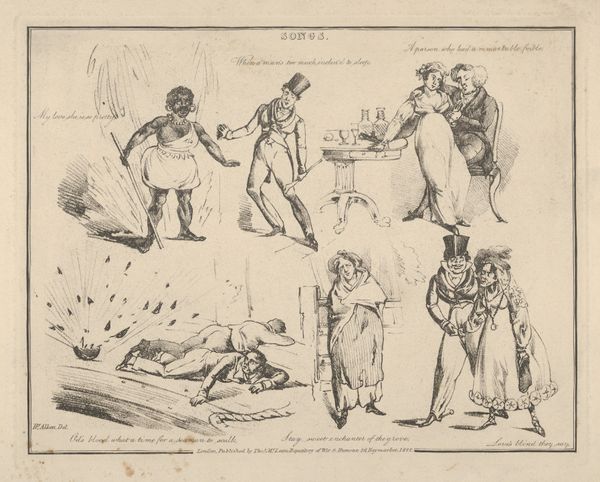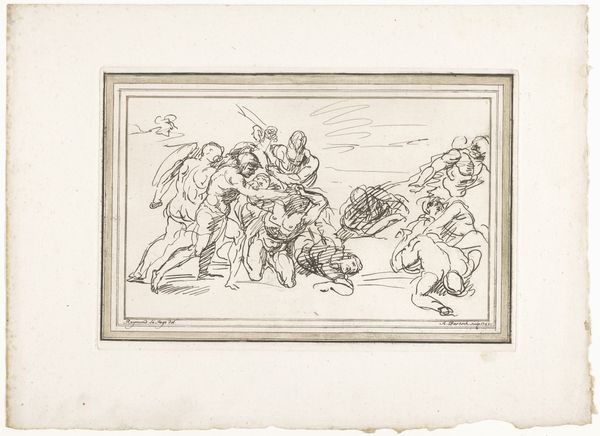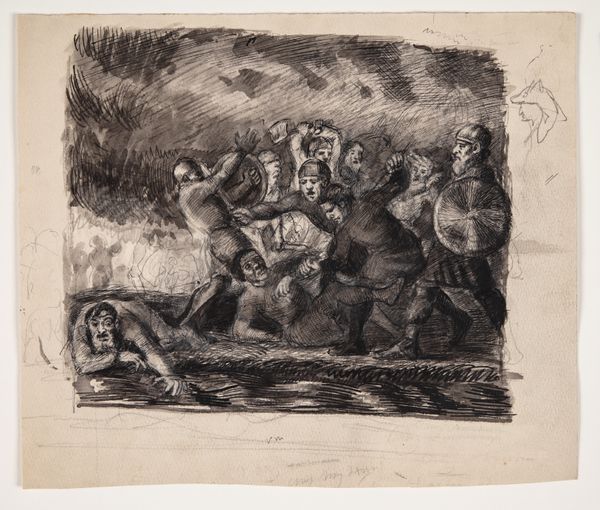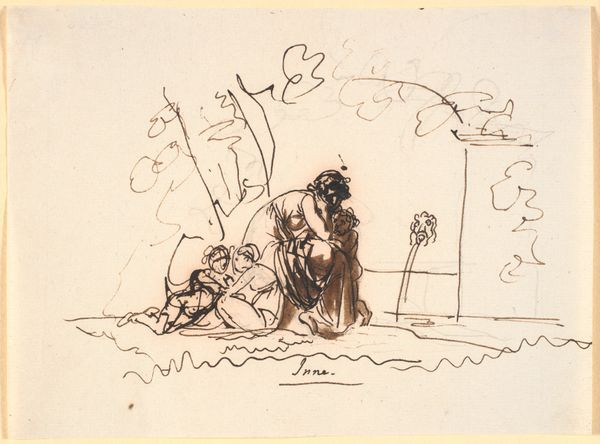
Muhamed, siddende mellem puder, til venstre en kvindefigur 1743 - 1809
0:00
0:00
Dimensions: 145 mm (height) x 186 mm (width) (bladmaal)
Curator: This is Nicolai Abildgaard’s "Muhamed, siddende mellem puder, til venstre en kvindefigur", dating sometime between 1743 and 1809. It's rendered with ink and watercolor on paper. Editor: The scene is quite striking, with its spare, almost unfinished quality, like a sketch. The figures feel a bit ethereal, even vulnerable. What stands out to you when you look at this piece? Curator: The focus, for me, lies in understanding the labor behind such representations, especially within the context of Orientalism. How was the image of Muhammad produced and consumed in 18th-century Europe? Consider the materials – ink and watercolor, readily available, relatively inexpensive. How does that influence the accessibility, and thus, the dissemination of this imagery? Editor: That’s fascinating. I hadn't considered the economics of art-making in relation to the subject. Does the choice of medium impact how the artist is depicting Mohammed? Curator: Absolutely. Watercolor and ink allowed for quick, reproducible images. It also questions whether such a “quick” image reduces the religious, perhaps creating a visual shorthand for complex cultural narratives and reinforcing stereotypical views. It also makes me think about the labour of replication -- prints, engravings after Abildgaard's original -- expanding the reach of his orientalist vision. How were such images received then, and what work do they do today? Editor: I see your point. It raises questions about the ethics of representation, particularly when considering the historical power dynamics at play. Curator: Exactly! It also invites us to interrogate our own consumption habits. How do we engage with images like this today, and what responsibilities do we have as viewers? Editor: This discussion really highlights the importance of questioning not just the “what” but the “how” and the “why” of art production. I now look at how even the humblest of materials might shape a work’s impact. Curator: Indeed. By thinking about material conditions and production methods, we gain a much deeper understanding of an artwork's cultural work.
Comments
No comments
Be the first to comment and join the conversation on the ultimate creative platform.
